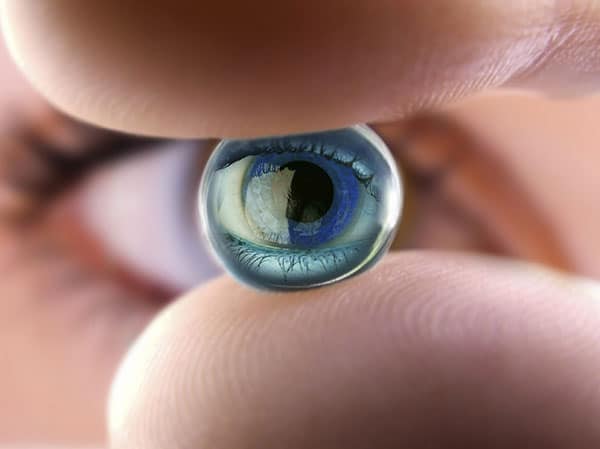Visual Stress Test
FREE - Contact lens trial
Conditions apply - apply in store for more details.
The Visual Stress Test: Unveiling a Unique Perception Challenge
Delving into the Depths of Visual Stress
Visual stress, a distinctive perception disorder, should not be mistaken for a learning difficulty like dyslexia. Although some symptoms may overlap, the treatment approaches for these conditions vary significantly.
Visual stress can accompany dyslexia, but it is not exclusively tied to it. In fact, it can also manifest alongside other neurological conditions such as MS, ME, epilepsy, and migraine. These associations have prompted researchers to delve deeper, seeking to shed more light on this intriguing subject.
Differentiating Visual Stress from Dyslexia
It is essential to note that visual stress and dyslexia are not inherently intertwined. Individuals may experience either condition independently or even simultaneously.
To address visual stress, overlays or tinted glasses are commonly employed, while dyslexia require a broader range of educational techniques, such as multisensory learning. By presenting this information in a realistic tone, our aim is to provide a clearer understanding of visual stress and emphasise its distinctiveness from dyslexia.

History of Visual Stress
The study of visual stress in the scientific realm can be traced back to 1980, when Olive Meares, a notable figure in this field, documented the symptoms associated with this condition. It was Helen Irlen who later developed a diagnostic technique for visual stress and even patented a range of coloured overlays and tinted spectacle filters aimed at alleviating the distressing symptoms.
Initially, there was doubt surrounding Irlen’s claims, as she failed to provide any peer-reviewed research data to support her treatment. However, subsequent research, including several meticulously conducted trials, has provided some evidence, although not yet definitive, for the existence of this condition and the beneficial impact of coloured overlays and filters.
Over the years, numerous theories have been proposed in an attempt to unravel the underlying causes of visual stress. These theories encompass contrast sensitivity, retinal sensitivity, binocular and accommodative anomalies, a flawed magnocellular pathway, and cortical hyperexcitability.
However, none of these theories can fully explain the diverse and specific colours required to alleviate the symptoms experienced by individuals with visual stress. Olive Meares, a teacher at a reading clinic in New Zealand, played a crucial role in the history of visual stress. She was the first to publish a report on the use of tinted overlays to aid individuals with reading difficulties.
Meares conducted her investigation by interacting with several children, questioning them about their experience when reading printed material. During these interactions, she made a fascinating observation: many children perceived words to be in motion or unstable, while the spaces between words seemed to transform into streams of white, making it difficult for them to read black print on white backgrounds.
This ground-breaking observation shed light on the challenges faced by individuals with visual stress and prompted further exploration of potential interventions to mitigate their reading difficulties (Meares, 1980).
Read more about the studies here!
So, What Are The Symptoms of Visual Stress?
- Blurring of print
- ‘Squashed up’ print
- Movement of print: wiggling or vibration of letters
- Letters muddling or words falling off the page’
- Letters change or double
- Letters are fading or becoming darker
- Patterns appear in the print
- illusions of colour—blobs of colour moving on the page
- Nausea, discomfort, or even pain caused by glare from the page
- Rivers of light snaking through the text (often described as waterfalls)
- Headaches, tiredness, or sore eyes
Signs of Visual Stress When Reading:
- Moving closer to or away from the page or frequently changing position
- Rubbing eyes
- Excessively blinking or looking away from the page
- Tiring quickly
- Concentration may be poor, and the attention span may be short
- Poor assimilation of reading text
- Losing place easily
- Poor spelling
- Misreading words
- The speed of reading is slower than expected for intelligence

How Common is The Condition?
Many people go through their lives without realising that their reading speed is slower than that of their peers due to visual stress. They struggle to explain why they face this discrepancy until they try using prescribed overlays and finally understand the extent of their symptoms.
Research indicates that around 20% of the population could benefit from using coloured overlays, while for 5% of individuals, incorporating colour into their reading would make a remarkable difference in their educational journey. As time goes on and their eyes become fatigued, their symptoms worsen, making long reading sessions increasingly challenging.
Consequently, many individuals avoid reading for extended periods or choose materials like magazines or comic books with larger print, which offer a more manageable reading experience. Interestingly, a significant number of sufferers remain completely unaware that their perception of text differs from what is considered normal.
Visual distortions have always been a constant in their lives, sometimes varying in intensity from day to day. They may find certain font styles easier to read than others, leading them to dismiss their difficulties as simply being tired or lacking enthusiasm.
Is The Condition Hereditary?
Current studies indicate that there is a strong possibility of a hereditary link to the manifestation of visual stress. Consequently, it is strongly advised to administer examinations to additional members of the family when one of the parents or the child is diagnosed with this particular ailment.
What Are Coloured Overlays?
Coloured overlays are thin, translucent plastic sheets that come in a range of vibrant colours. They are specifically designed to be placed on top of written content, such as books or documents. These overlays offer a wide variety of colours, and you can even layer two of them to enhance the chromatic effect.
What Happens in a Visual Stress Test?
The Visual Stress Test is a comprehensive evaluation that delves into various aspects of a patient’s visual health. It begins by thoroughly reviewing the patient’s medical history, assessing their visual acuity, and examining the coordination of their eyes, including depth perception, and tracking abilities.
The main objective of this assessment is to identify any signs of visual strain or discomfort that the patient may be experiencing. If any symptoms are detected, it is crucial to determine the appropriate colour overlay that can alleviate or exacerbate these issues, as individuals respond differently to different colours.
Once signs and symptoms are identified, the patient may be recommended for orthoptic exercises if necessary. Additionally, a set of overlays will be provided for the patient to use over a few weeks, allowing them to subjectively evaluate whether the colour significantly impacts their reading ability in terms of speed and fluency.
This comprehensive assessment typically takes around thirty minutes to complete. If a specific colour overlay does not yield noticeable changes, a colourimeter will be utilised during a subsequent visit to accurately determine the ideal hue and saturation of the prescribed lor. This process usually takes approximately fifteen minutes. If a particular colour is chosen, lenses will be used to assess reading fluency. Following a thorough eye examination, eyeglasses may be prescribed at this stage, if necessary.


Visual Stress Test at Bill Opticians
At Bill Opticians, our expertise lies in offering specialised visual stress tests, utilising specific colours to support individuals facing reading difficulties, such as dyslexia. Led by our skilled professional, Hannah Stewart, our monthly colorimetry clinic takes place at our Newton Abbot practice.
During your visual stress test, we conduct a thorough orthoptic check to ensure the balance and efficiency of your eye muscles in tracking words on a page. Following this, our visual stress test addresses any reading problems by employing coloured filters. If the filters prove effective, we can incorporate the prescribed colour into a pair of spectacles.
However, if the impact of the filters on resolving reading issues remains uncertain, we utilise temporary-coloured overlays to further assess the situation. Regrettably, colorimetry does not receive funding from the NHS, so private payment is necessary to avail of these services.
Colorimetry Assessment Cost:
| Full Initial Assessment – 45mins | £100 |
| Follow Up appointments – 45mins | £100 |
| Coloured Overlays (this would then be refunded when the overlays are returned) |
£2 per sheet |
| Spectacles complete with Colorimetry tint | £100 |
| Written Report | £30 |
Contact us for more information or simply book a colorimetry test online.
